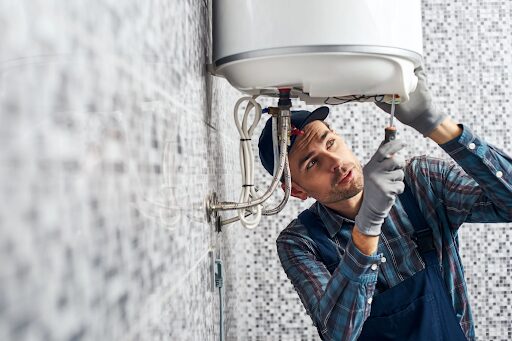There’s something oddly comforting about a chilly morning when you can just flick a switch and feel that slow bloom of warmth spreading through the room. But what happens when you turn the dial, and instead of cozy air, you’re greeted by silence—or worse, a gust of cold? That’s the kind of wake-up call no one wants. Yet, it’s a scenario many homeowners experience simply because they’ve neglected something as basic (and crucial) as timely heating repair.
We often take our home’s warmth for granted until the moment it’s gone. And when the system finally sputters to a stop, that’s when reality sets in—those regular checks and small fixes you kept postponing suddenly feel like they would’ve been worth every penny.
The Subtle Signs We Miss
Most heating issues don’t happen overnight. They creep up quietly, disguised as harmless quirks—a faint rattle, uneven warmth between rooms, or maybe that dusty smell when the furnace first kicks in. It’s easy to shrug these off, assuming they’ll go away. But like most things mechanical, “small” problems tend to snowball into costly ones.
The tricky part is, heating systems rarely just fail out of the blue. They leave breadcrumbs—tiny symptoms pointing toward something that needs attention. A thermostat that can’t seem to hold the right temperature. A unit that runs longer than usual. A sudden spike in your energy bill. These aren’t random—they’re warning lights flashing for your attention.
Why Delaying Repairs Costs More Than You Think
Let’s be honest—no one wakes up thinking, “I should book a furnace inspection today.” It’s one of those tasks we mentally push to “later,” somewhere between changing the smoke detector batteries and finally organizing that junk drawer. But procrastination in this case doesn’t just make your house colder—it hits your wallet harder too.
When one part of your heating system isn’t working properly, the rest has to compensate. This means more strain, more energy use, and eventually, more expensive breakdowns. What could have been fixed with a minor tweak might turn into a full-blown system replacement if ignored long enough.
In simpler terms, regular maintenance is like going to the doctor for a check-up. It’s not exciting, but it keeps your system “healthy.” You wouldn’t wait until you can’t breathe to see a doctor—so why wait until your heater completely gives out?
The Unsung Benefits of a Well-Maintained Heater
Beyond the obvious comfort, there’s an entire list of reasons to stay on top of your home’s heating system. A properly serviced unit works efficiently, consuming less energy for the same output. That means lower bills without having to bundle up indoors like you’re camping in the living room.
It also means cleaner air. Dust, debris, and mold can build up in neglected units, circulating allergens through your home. A professional tune-up includes cleaning filters, ducts, and vents—small tasks that make a big difference for your health.
And then there’s peace of mind. Winter storms or cold snaps don’t wait for convenient times to strike. Knowing your heating system has been checked and cleared for the season gives you one less thing to worry about.
The Real-World Side of Heater Repairs
You’ve probably heard neighbors or friends mention the cost of repairs and rolled your eyes. “I’ll wait until it really breaks,” you might think. But talk to anyone who’s ever had to deal with emergency service calls at midnight when the temperature’s dropping below freezing—they’ll tell you it’s not worth the risk.
Timely heater repair isn’t just about fixing what’s broken. It’s about preventing that breakdown from happening in the first place. Think of it as insurance against the discomfort (and stress) of waking up in a freezing house.
Good technicians don’t just swap out parts—they inspect the whole system, looking for inefficiencies or potential hazards. Sometimes a small repair—tightening a loose connection, replacing a worn belt—can extend your system’s lifespan by years. That’s the kind of return on investment you don’t see on paper, but you feel it every time your heater runs smoothly through another winter.
When DIY Meets Its Limits
There’s a certain satisfaction in fixing things yourself. And for small home tasks, that’s great. Changing filters, cleaning vents, or checking the thermostat are perfectly doable. But when it comes to internal components—wiring, gas valves, or heat exchangers—this is not the place to experiment.
Professional technicians are trained not just to repair but to diagnose accurately. They have tools, experience, and safety protocols most homeowners simply don’t. The risk of electric shock, gas leaks, or carbon monoxide exposure isn’t worth saving a few dollars upfront.
So, by all means, handle the basics. But when your system’s acting up in a way that’s beyond your comfort zone, that’s the moment to call in the experts.
Preparing for the Next Cold Season
If your heating system’s been through a rough season or hasn’t been checked in over a year, now’s the time to schedule maintenance. Think of it as getting ahead of the curve. Don’t wait until the first frost hits and every service company in town is fully booked.
A preseason tune-up ensures that everything is running efficiently before you actually need it. It’s also when technicians can catch small issues—like a weak ignition system or an aging blower motor—before they cause a full shutdown.
In a world that’s already full of surprises, your home’s warmth shouldn’t be one of them.
Wrapping It Up
At the end of the day, heating care isn’t about being overly cautious—it’s about being practical. Comfort, safety, and cost-efficiency all start with simple awareness. Listen to your system, pay attention to those little changes, and don’t hesitate to make that service call when something feels off.
Because when winter rolls in, you’ll want your home to be the place everyone escapes to—not from.
So, take a minute today—book that inspection, replace that filter, or call your trusted technician. The small effort you make now will return as many nights of uninterrupted warmth, comfort, and peace of mind.
After all, nothing beats sitting by the window on a cold evening, cup of coffee in hand, knowing your heater’s quietly doing its job—just the way it should.

